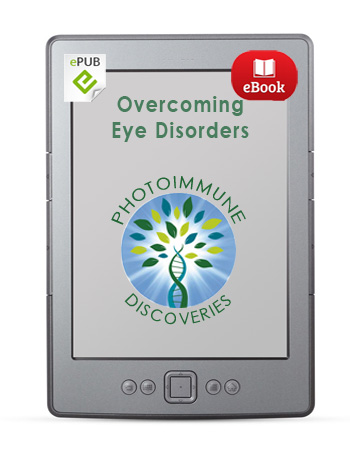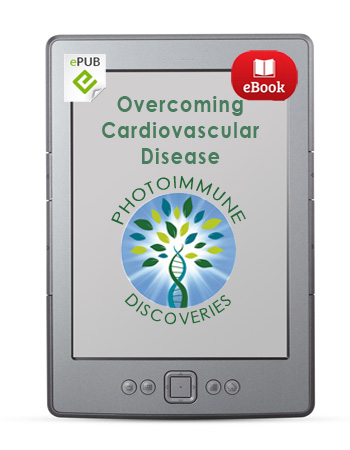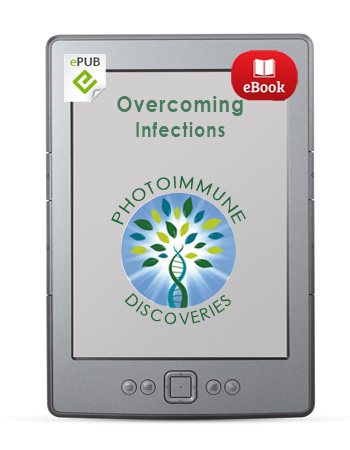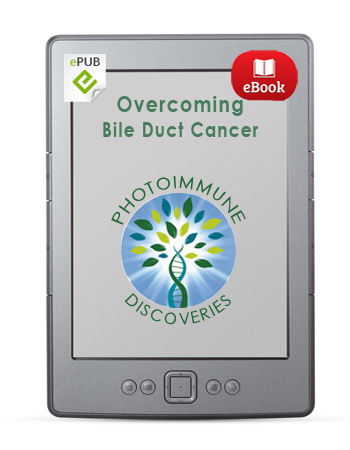Description
Overcoming Eye Disorders
The Promise of Photodynamic Therapy and Other Innovative Treatment Options for Glaucoma and Macular Degeneration
The human eye is astoundingly elegant in its design, and there are many factors that determine healthy eye function. Not surprisingly, then, there are also many types of eye diseases: macular degeneration, glaucoma, cataracts, diabetic retinopathy, retinitis pigmentosa, myopia (nearsightedness), astigmatism, and others. This ebook focuses on the first two diseases listed: macular degeneration and glaucoma.
Overcoming Eye Disorders: The Promise of Photodynamic Therapy and Other Innovative Treatment Options for Glaucoma and Macular Degeneration highlights a new approach to the treatment and management of eye disorders, one rooted in the astounding therapeutic potential of Photomedicine (light-based medicine). Though the healing applications of light date back many centuries, it is only within the past few decades that high-tech developments in laser technology have enabled the medical profession to realize the true healing potential of light.
Overcoming Overcoming Eye Disorders is divided into four parts: (1) Understanding and Treating Eye Disorders; (2) The Photomedical Approach to Eye Disorders; (3) Promising Research Directions; and (4) Lifestyle Medicine to Improve Long-Term Control of Eye Disorders.
Part 1 opens out with a compelling description of the eye’s anatomy, followed by an introduction to age-related macular degeneration, or AMD. The various types and manifestations of AMD are illuminated. This ebook is primarily concerned with the wet or late-stage form of AMD, its prevention and treatment. In the past decade, anti-VEGF therapies have revolutionized the therapeutic approach to neovascular AMD, and such therapies still have their limitations. Another major treatment for neovascular AMD is laser therapy or photocoagulation. In this approach, the physician uses a high-energy laser beam to create tiny burns in areas with abnormal blood vessels. By destroying existing blood vessels, laser therapy may stop the growth of new ones, thus halting or at least slowing the process of vision loss in the early stages of AMD.
The second major eye disease addressed in the ebook is glaucoma, the second-leading cause of blindness after AMD. The glaucoma diagnosis known as primary open-angle glaucoma (POAG) accounts for about 95% of all glaucoma cases and is main condition addressed in this ebook. Risk factors and treatments for glaucoma are addressed in detail in Part 1.
Photodynamic therapy, or PDT, emerged in the early 1900s originally as a way to treat microbial infections. Several decades later, PDT attracted attention as a cancer treatment, and by the late 1990s, PDT had emerged as a novel treatment for AMD. More specifically, the light-based treatment was used for the condition called choroidal neovascularization, or CNV, which can be associated with both AMD and myopia (nearsightedness).
Here’s an excerpt from the ebook:
“In the context of PDT, the specific mechanism of treatment is as follows: The process of CNV can be stopped with the photosensitizer (e.g., verteporfin), which accumulates in the choroidal vessels of the eye and is activated by blue laser light. Upon light exposure, this agent generates reactive oxygen molecules that trigger a series of mechanisms leading to the blocking of blood vessels and a breakdown of the neovascularization process.
“Note that even though these blood vessels do not grow back, other vessels will still be formed due to continued expression of the growth factor, VEGF. For this reason, PDT treatments must be repeated in order for the treatment benefits to be sustained. This is one of the reasons the pharmaceutical industry has been developing and promoting new drugs aimed at inhibiting the neovascularization process. VEGF is a key angiogenic growth factor, and as mentioned in Part 1, anti-VEGF drug therapy has emerged in the past decade as the primary treatment for AMD and is becoming increasingly popular for both early-stage and progressive AMD.
“A recent review of anti-VEGF drug therapy for neovascular AMD (NVAMD) concludes that, “Patients with NVAMD enjoy heretofore unprecedented vision gains when managed with anti-VEGF therapy, and the limited body of evidence to date regarding long-term anti-VEGF treatment shows these vision gains can be maintained through two years.”
“PDT can have similar effects by inhibiting the same mechanism, i.e., neovascularization or new blood vessel formation. Indeed, PDT can be classified as an anti-angiogenic treatment because its primary aim is to destroy or remove choroidal neovascularization. In this regard, however, PDT seems to be less effective in the short term when compared to anti-VEGF drugs, especially when it comes to counteracting the more progressive and advanced forms of AMD.
“In 2000, the US Food and Drug Administration approved PDT as a first-line treatment for AMD. In Europe, PDT is approved for the treatment of subfoveal lesions composed of predominantly classic CNV, and for hidden (occult) lesions with no classic CNV but evidence of recent disease progression. The treatment is performed with red laser light after intravenous injection of the photosensitizer (such as a porphyrin), which leads to the accumulation of the porphyrin in cells involved in the progression of AMD.
“Since 2000, millions of PDT treatments have been administered with good results throughout Europe and North America. Many of the current treatment recommendations for PDT are based on the results of two large clinical trials: (1) Treatment of Age-Related Macular Degeneration with Photodynamic Therapy Study and (2) Verteporfin in Photodynamic Therapy Studies.[1] For this research, thousands of patients were treated worldwide over the course of several years.”
The final section of the ebook explores some of the practical ways or self-care practices for improving visual health and longevity. Proper nutrition and other aspects of a health-promoting lifestyle can play a major role in this regard. The ebook’s appendix includes a special discussion about two light-sensitizing substances, a dietary supplement called Bremachlorophyll, and a unique medicine called Bremachlorin. Because of its diverse effects against infections, Bremachlorin-PDT is likely to revolutionize the way Photomedicine is incorporated into modern treatment of infectious diseases.
[1] Verteporfin In Photodynamic Therapy Study Group.Verteporfin therapy of subfoveal choroidal neovascularization in age-related macular degeneration: two-year results of a randomized clinical trial including lesions with occult with no classic choroidal neovascularization–verteporfin in photodynamic therapy report. Am J Ophthalmol. 2001;131(5):541-60.






 English
English Français
Français Deutsch
Deutsch Nederlands
Nederlands